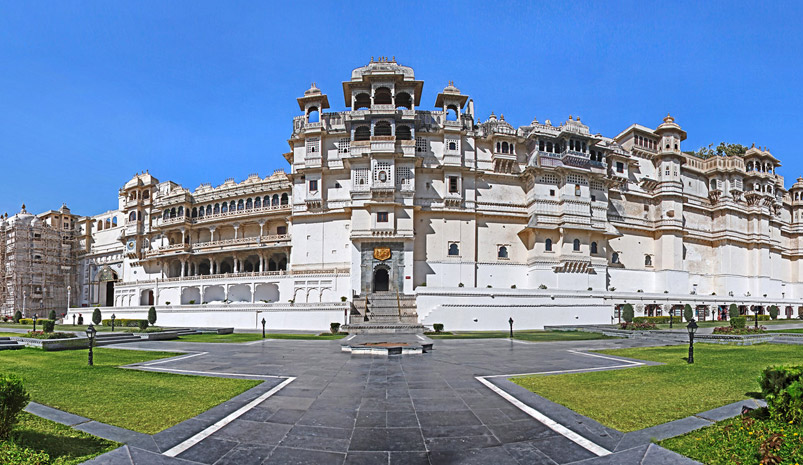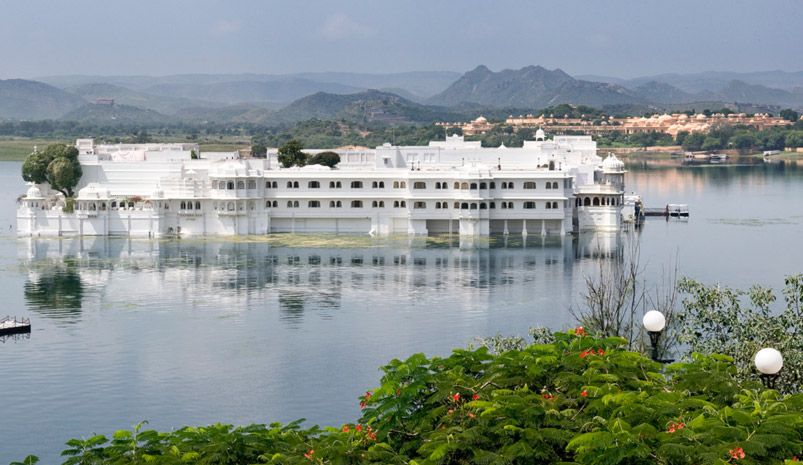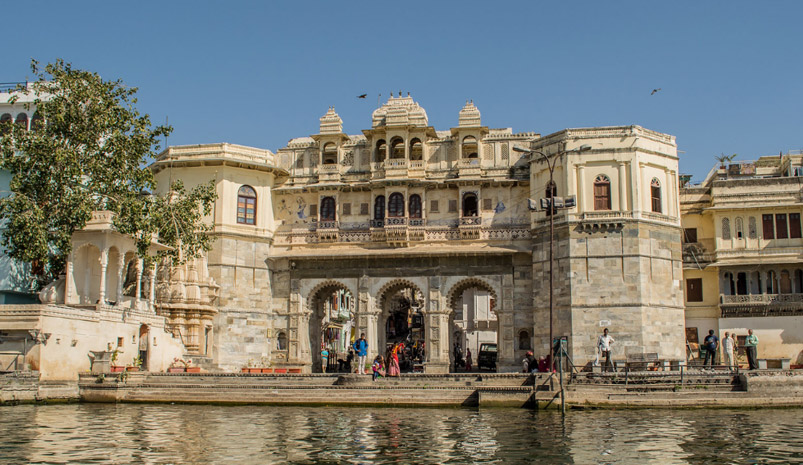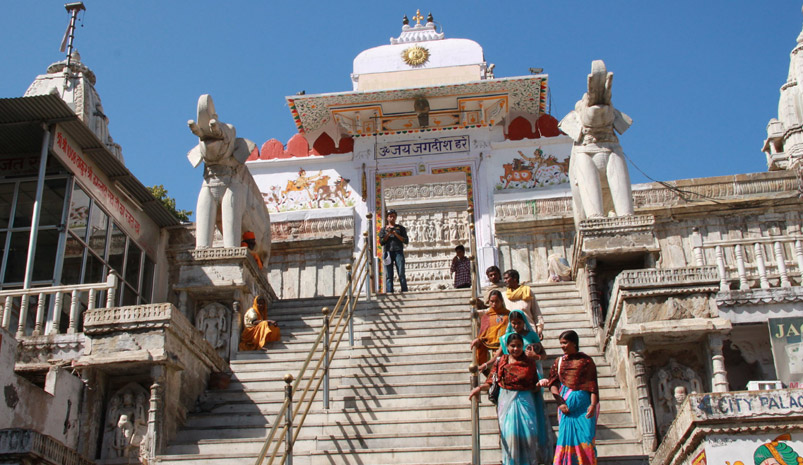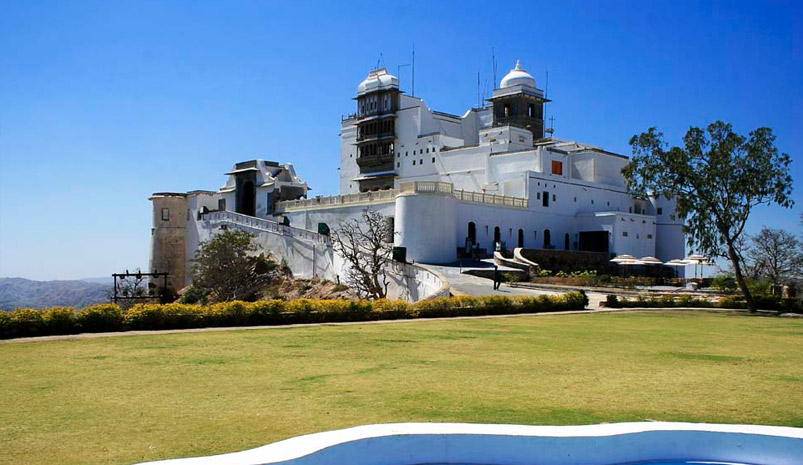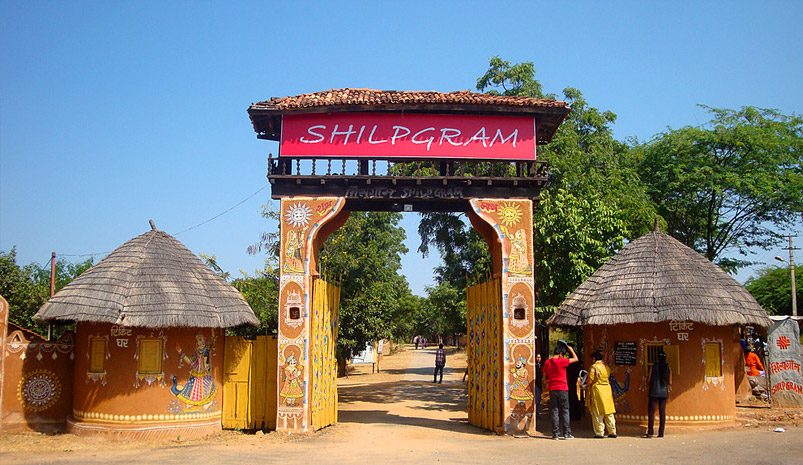Udaipur
Udaipur, also known as the “City of Lakes” and the “Venice of the East,” is a stunning city in the state of Rajasthan, India. It offers a rich cultural heritage and a host of captivating destinations. Here are some prominent Udaipur destinations:
- City Palace: This magnificent palace complex stands on the eastern bank of Lake Pichola. It showcases a blend of Rajasthani and Mughal architectural styles and offers breathtaking views of the lake and the city. The palace houses museums, courtyards, galleries, and opulent rooms.
- Lake Pichola: A picturesque lake surrounded by hills, palaces, and ghats, Lake Pichola is a major attraction in Udaipur. Visitors can enjoy boat rides, witness stunning sunsets, and explore the islands and landmarks scattered across the lake.
- Jag Mandir: Situated on an island in Lake Pichola, Jag Mandir is an exquisite palace that offers a tranquil retreat. Its beautiful architecture, marble carvings, and garden make it a popular spot for visitors.
- Saheliyon-ki-Bari: Known as the Garden of the Maidens, this stunning garden was constructed for the women of the royal household. It features fountains, kiosks, marble elephants, and delightful flowerbeds, offering a serene atmosphere.
- Bagore Ki Haveli: This historic haveli-turned-museum provides a glimpse into the royal lifestyle of Udaipur. It houses a collection of artifacts, costumes, traditional art, and hosts cultural performances such as folk dances and puppet shows.
- Sajjangarh Palace: Perched on a hilltop overlooking Udaipur, Sajjangarh Palace, also known as the Monsoon Palace, offers panoramic views of the city and its surroundings. It was built as an astronomical center and a monsoon retreat.
- Jagdish Temple: Located in the heart of Udaipur, Jagdish Temple is a beautiful and intricately carved Hindu temple dedicated to Lord Vishnu. It is a significant spiritual and architectural landmark.
- Shilpgram: Situated about 3 kilometers west of Udaipur, Shilpgram is a rural arts and crafts complex that showcases traditional rural life, arts, and crafts from Rajasthan and other states of India.
These destinations showcase the charm, history, and cultural heritage of Udaipur, making it a delightful place to explore and experience the grandeur of Rajasthan.
History
Udaipur, in Rajasthan, India, has a rich history dating back to its foundation in 1559 by Maharana Udai Singh II. It served as the capital of the Mewar kingdom, known for its resistance against the Mughals. Udaipur became a cultural hub under Maharana Jagat Singh in the 17th century. The city’s magnificent palaces, like the City Palace and Lake Palace, are a testament to its architectural splendor. Udaipur also played a significant role in the fight for Indian independence. Today, Udaipur stands as a vibrant city, preserving its heritage and attracting visitors with its regal charm and picturesque surroundings.
Geography
Udaipur is a city located in the southern region of the state of Rajasthan, India. It is situated in the Aravalli Range of mountains, surrounded by hills and valleys. The city is built around several artificial lakes, including the prominent Lake Pichola, Fateh Sagar Lake, and Udai Sagar Lake. These lakes, along with the surrounding lush greenery and hills, contribute to the city’s picturesque and serene environment.
Udaipur is known for its scenic beauty, with the Aravalli Hills providing a stunning backdrop. The city’s landscape is dotted with palaces, havelis, and temples, blending with the natural surroundings. The climate in Udaipur is characterized by hot summers and mild winters, typical of the desert region of Rajasthan.
Overall, the geography of Udaipur, with its lakes, hills, and architectural marvels, adds to the city’s allure and makes it a popular tourist destination.
Weather
Udaipur experiences a tropical climate with distinct seasons. Here is an overview of the weather in Udaipur:
Summer (March to June): Summers in Udaipur are hot and dry. The temperature during this season can reach as high as 40°C (104°F) or more. It is advisable to stay hydrated and avoid outdoor activities during the peak afternoon hours.
Monsoon (July to September): Udaipur receives moderate to heavy rainfall during the monsoon season. The city becomes lush and green, with occasional showers and thunderstorms. The temperature ranges from 25°C to 35°C (77°F to 95°F). The lakes and surrounding hills look especially picturesque during this time.
Autumn (October to November): Autumn in Udaipur brings pleasant weather with a gradual decrease in temperature. Days are warm, with temperatures ranging from 25°C to 30°C (77°F to 86°F), while nights become cooler. This season is considered one of the best times to visit Udaipur.
Winter (December to February): Udaipur experiences mild winters with pleasant daytime temperatures. However, nights can be chilly, with temperatures dropping to around 5°C to 10°C (41°F to 50°F). It is advisable to carry warm clothing, especially during the evenings and early mornings.
Overall, the best time to visit Udaipur is during the winter season (October to March) when the weather is pleasant for exploring the city’s attractions. However, each season offers its own charm, and Udaipur can be visited throughout the year. It is recommended to check the weather forecast before planning your trip to Udaipur to ensure a comfortable and enjoyable visit.
How to reach
Agra, being a popular tourist destination in India, is well-connected by various modes of transportation. Here are the common ways to reach Agra:
By Air: The nearest airport to Agra is the Indira Gandhi International Airport in New Delhi, which is about 220 kilometers away. From there, you can take a domestic flight to Agra’s Kheria Airport. Alternatively, you can hire a taxi or take a train from New Delhi to Agra.
By Train: Agra has excellent rail connectivity with major cities across India. The city has three main railway stations: Agra Cantt, Agra Fort, and Raja Ki Mandi. These stations are well-served by trains from cities like Delhi, Mumbai, Jaipur, and Kolkata, among others.
By Road: Agra is well-connected by road networks and can be easily reached by buses, taxis, or self-driven cars. The Yamuna Expressway connects Agra to Delhi, making the journey faster and more convenient. Several national highways also connect Agra to other cities and states.
By Bus: Agra is well-connected to neighboring cities and states through a network of government and private buses. Many tour operators offer bus services to Agra from nearby destinations like Delhi and Jaipur.
Once you reach Agra, local transportation options like taxis, auto-rickshaws, and cycle-rickshaws are available for getting around the city and visiting various tourist attractions. It’s advisable to plan your travel in advance and check the schedules and availability of transportation modes for a smooth journey.
Getting Around
Getting around in Udaipur is relatively easy, thanks to various transportation options available. Here’s how you can navigate the city:
Auto-rickshaws: Auto-rickshaws, also known as tuk-tuks, are a popular mode of transportation in Udaipur. They are readily available throughout the city and can be hailed from the roadside or near tourist attractions. Make sure to negotiate the fare with the driver before starting your journey or insist on using the meter if available.
Taxis: Taxis are another convenient mode of transportation in Udaipur. You can hire a taxi for a few hours or for the entire day to explore the city comfortably. Prepaid taxis are available at the airport and railway stations, or you can book through taxi services or mobile apps.
Cycle-rickshaws: For short distances or within congested areas, cycle-rickshaws are a popular and eco-friendly option. These manually-pulled rickshaws can be found near popular tourist spots and markets.
Local Buses: Udaipur has a local bus network that connects different parts of the city. The buses are an economical way to get around, but the routes and schedules might be a bit challenging for tourists. It’s recommended to ask for information at the bus stand or seek assistance from locals.
Private Cars: Renting a private car or hiring a driver is a convenient option, especially if you prefer a more personalized and comfortable experience. Many car rental agencies offer services with or without drivers, allowing you to explore Udaipur and nearby attractions at your own pace.
Walking: Udaipur’s compact size and pedestrian-friendly streets make it suitable for exploring on foot, especially in the old city area. Walking allows you to soak in the charm of the city, discover hidden gems, and interact with the locals.
It’s worth noting that certain areas in Udaipur, especially the old city, have narrow lanes where motorized vehicles may not be allowed. In such cases, you can explore on foot or hire a local guide for a guided tour. Always consider traffic conditions, plan your travel time accordingly, and have a map or navigation app handy to navigate the city efficiently.
